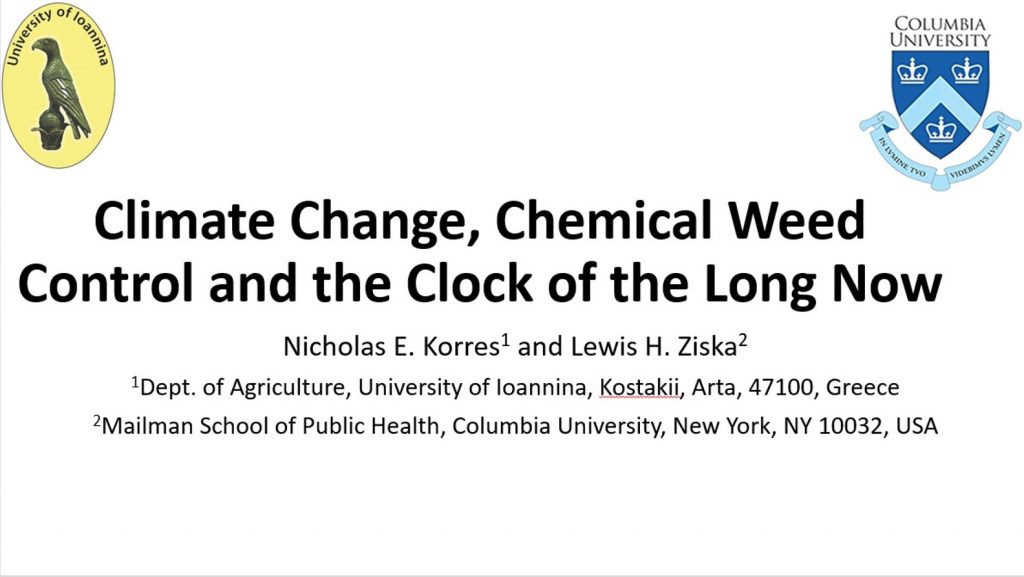Climate change, chemical weed control and the clock of the long now
Nicholas E. Korres1 and Lewis H. Ziska2
1Dept. of Agriculture, School of Agriculture, University of Ioannina, Kostakii, Arta, 47100, Greece; 2Mailman School of Public Health, Columbia University, New York, NY 10032, USA
Weed Science is predominantly a “reactive” science, it responds to current needs effectively but fails to make long-term thinking an indispensable component. “How do we make long-term thinking automatic and common instead of difficult and rare?” Stewart Brand asks in his book The Clock of the Long Now. An important question for weed science, to put the concept under perspective, could be: What will happen in the future if herbicide evolving resistance by the weeds is combined with the impact of climate change on invasive plant ecology, and plant-to-plant competitive interactions? Increasing atmospheric carbon dioxide (CO2) levels and a changing climate characterized by higher temperatures, irregular precipitation patterns, long drought periods and other extreme weather phenomena, will undoubtedly affect weed biology and demographics along with crop productivity. Weeds are likely to show greater resilience and better adaptation to changes in CO2 concentrations and rising temperatures, compared to crop plants, due to their diverse gene pool and greater physiological plasticity. Also, weeds with C3 and C4 photosynthetic pathways may exhibit differential responses to higher CO2 levels and temperatures, which can affect the dynamics of crop-weed competition. However, the extent of such outcome could be minimal if weed management, especially the widespread and effective use of herbicides, minimizes any future risk; but such an outcome assumes that CO2 or climate change will not affect herbicide efficacy per se. Is this a fair assumption? While additional data are needed, there is sufficient information currently available to begin an initial assessment of both the physical and biological constraints likely to occur before, during and following herbicide application. This talk presents several physical and biological interactions that are likely, overall, to significantly reduce herbicide efficacy. These interactions can range from climatic extremes that influence spray coverage to direct effects of CO2 or temperature on plant biochemistry and morphology in relation to uptake, translocation, and activity of different herbicide chemistries. Identification of these mechanisms will be essential to both understand and strengthen weed management strategies associated with rising levels of CO2 in the context of an uncertain and rapidly changing climate. The “clock of the long now” is ticking!
- Pesticides 2022--75ebeb48
Pesticides 2022--75ebeb48
Pesticides 2022--dfc1ad57

